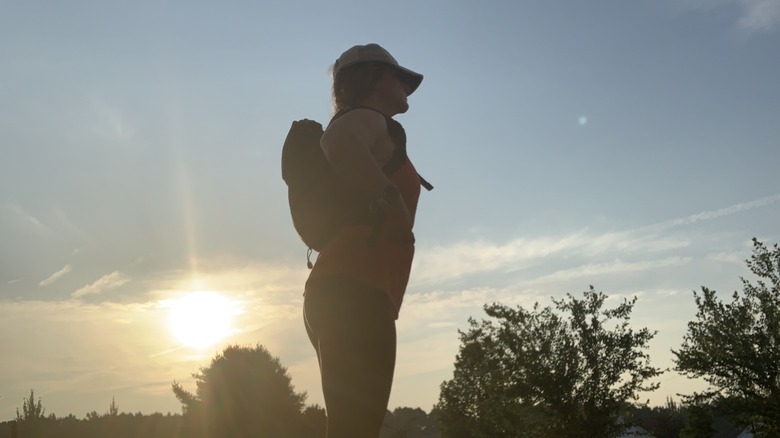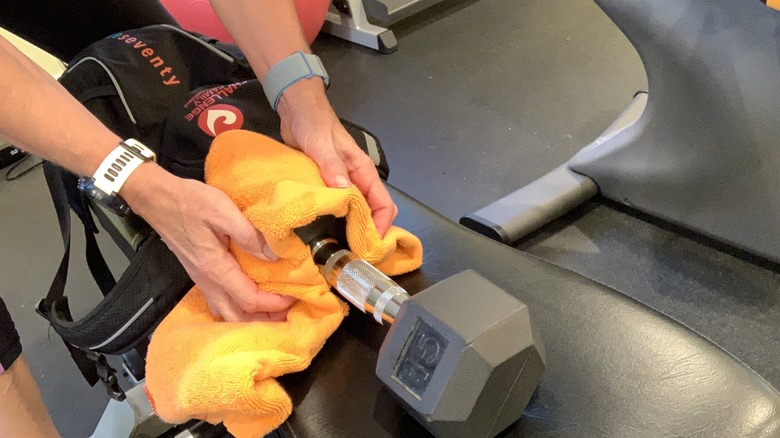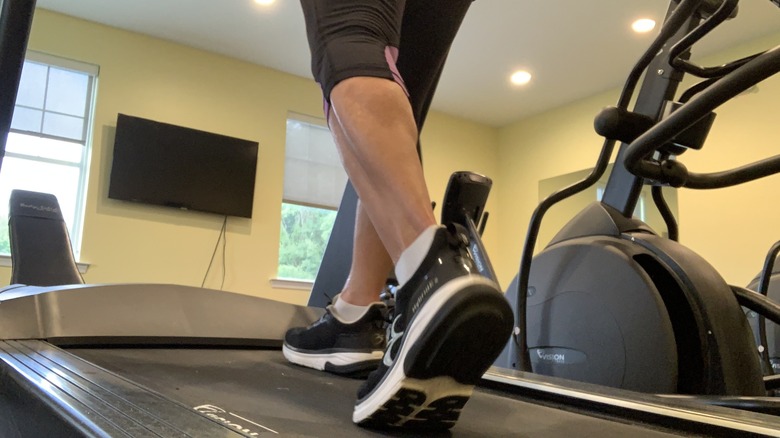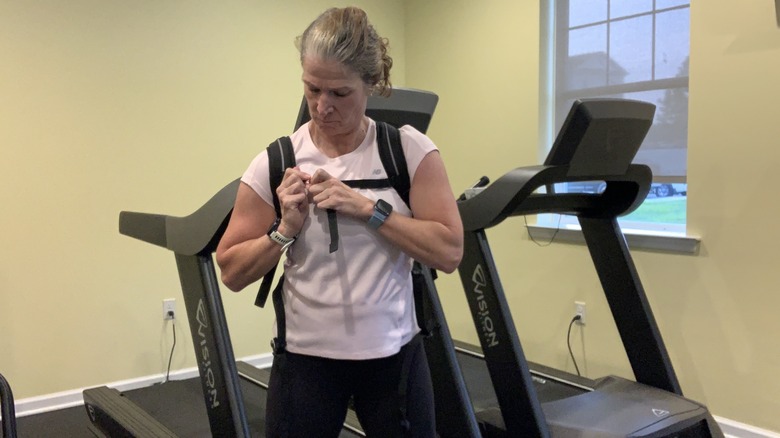My friend Jeff showed up to his job one day wearing a 35-pound backpack. Because he spends most of the day on his feet, I asked him why he needed the excess weight. “Rucking,” he said. “My buddy and I are doing a military-style race.” Puzzled, I asked my brother, who’s a retired colonel. He told me he would have to do 12-mile marches carrying 35 pounds of gear as part of his military training.
Now, rucking has become a new exercise trend. I’ve seen guys working out with weighted vests on hiking trails and the sidewalks. Several websites claim that you burn more calories while rucking than you do walking at the same speed. It kind of makes sense, because walking around the gym with a few weights in your hands requires a little more effort.
However, I didn’t find much research on rucking’s calorie burn aside from a 2022 article in Ergonomics, which found that men rucking on a treadmill on zero or a 10% incline burned more calories. Women burned more calories only when the treadmill was at a 10% incline. So I used this study to test rucking for myself.
Adding 15 pounds to your walk can feel heavy
A few companies sell specially designed rucking backpacks and weighted vests, but I didn’t want to invest $100 if it wasn’t going to be a good workout. I took a small backpack that could fit a dumbbell and some hand towels for padding. The study mentioned above used a 14-pound weighted vest for women, so I added a 15-pound dumbbell to my backpack. The towels didn’t fit as nicely as I had hoped, but they were just enough so that I wouldn’t feel the metal digging into my back.
I’ve carried large backpacks before, but my little backpack seemed harder to hoist around my back. Thankfully, I also had straps around the front of the backpack so the backpack would stay relatively in place. To make my testing fair, I ate the same thing each morning before exercising. I drank a small protein shake with soy milk 20 minutes before I hit the treadmill. I also made sure to exercise at the same time on both days.
Rucking seemed much harder at an incline
I set the treadmill for 3.0 miles per hour at a 0.0% incline for the first 10 minutes. I didn’t feel much difference in terms of effort with the added weight, and I also didn’t feel my muscles working any differently. I was also very aware of my posture because any leaning in one direction was much more noticeable with the extra 15 pounds. I burned 29 calories in 10 minutes, and my heart rate averaged 81 beats per minute. The 5% incline felt a little harder, but I also wasn’t used to walking on an incline while keeping the same pace. The calorie burn was 47, and my heart rate averaged 96. (Incidentally, here are some of the best workouts to try if you love the treadmill.)
The big difference was at the 10% incline. I labored, putting one foot in front of the other with extra weight on my back. I kept thinking about my friend who trekked 500 miles across the Camino de Santiago in Spain with a 10-pound backpack. I had more respect for her when she hiked the Pyrenees mountains. I was seriously sweating, and my heart rate ticked up to 130, with an average of 122. I also burned 82 calories.
Comparing the calorie burn between walking and rucking
The next day, I did the same treadmill test without the weighted backpack. I burned 4 fewer calories with no incline, 6 fewer calories on a 5% incline, and 19 fewer calories with a 10% incline. In sum, rucking burns 30% more calories on a 10% incline than regular walking on that same incline.
The next two days, I road-tested rucking for two miles to see if there were any differences there. Mind you, I live in an area with very flat roads, so I couldn’t test rucking on any hills. I tried to keep the same effort both days, but I wound up finishing the two miles two minutes faster without the weighted backpack. That might explain the 3-calorie difference in workouts. My heart rate was relatively the same, and I took one fewer step per minute with the weighted backpack.
If you want to burn more calories, you can maybe try rucking, but know that you probably won’t get any added benefit unless you’re climbing up and down hills. I would imagine you’d also build more muscle that way. Rucking did help me with my posture, because I definitely noticed when I started slouching. And of course, rucking also might be useful if you’re training for the 12-mile military rucks or the Camino de Santiago in Spain.



